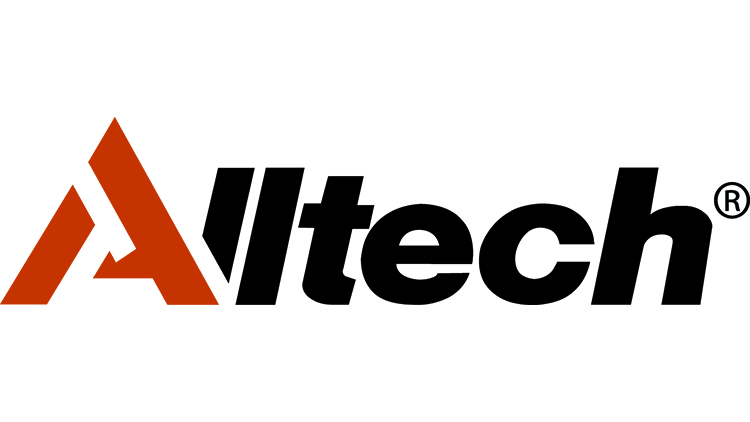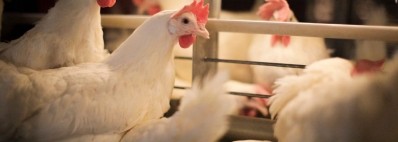Promotional Features
Did you know ASF can be transferred via feed?
Here is what you need to know about feed biosecurity
Up until 2013, feed was not even part of the biosecurity conversation. Then the porcine epidemic diarrhea virus (PEDV) outbreak made history and that all changed. The industry was compelled to take a step back and look at different ways viruses could be spread. The introduction of PEDV to the US resulted in the loss of approximately 7m pigs and much focus was placed on how PEDV arrived in North America. As the PEDV strain in the US was more than 99% similar to that in China, and now that African swine fever (ASF) is present and rampant in China, there are increasing and valid concerns about the risk of feed for viral transmission (Dee et al., 2017).
A comprehensive biosecurity program is one of the most important programs a farm can put in place. It acts as the farm’s guard to keep it safe from outside threats and risks, and the first line of defense starts with feed safety. Recent outbreaks of ASF throughout Asia and parts of Europe through 2018-2019 have put the spotlight on biosecurity and the spread of foreign animal diseases (FAD) through feed and feed ingredients.
“There were viruses introduced to our North American herd, specifically in the US, when PEDV was introduced to our populations in 2013,” explained Dr. Gordon Spronk, co-founder of Pipestone, during his presentation at ONE: The Alltech Ideas Conference. “We, as field veterinarians, could observe that the virus was moving around differently than what we normally had it move around. We concluded quickly that feed, based on our observations and based on our data, was responsible for moving this virus between our farms.”
What the new research says
Recent results of a transboundary study provided even more evidence that feed ingredients represent a risk of transporting pathogens at domestic and global levels.(Dee et al 2018). The study examined 11 globally relevant livestock viruses in 11 different feed matrixes and simulated intercontinental transportation conditions of feed and feed ingredients. The study developed two transboundary models to evaluate the survival of viral pathogens in feed ingredients that are imported into the US — a Trans-Pacific model and a Trans-Atlantic model.
The research concluded three key findings:
1) Viruses can survive in feed and feed ingredients, but survival is different across viruses, likely due to their specific structural characteristics (i.e. non-enveloped = more durable vs. enveloped = less durable).
2) Certain ingredients were more conducive to virus survival than others. Viruses such as PEDV, porcine reproductive and respiratory syndrome virus (PRRSV) and ASF were found to survive in ingredients such as conventional soybean meal.
3) The results emphasized the importance of quarantine time on feed and/or feed ingredients that pose a disease contamination risk
Table 1: Viral survival in various feed matrixes (Selected data from Dee et al., 2018)*
Table 1: A red-colored box with a (+) indicates that virus was recovered in a viable form from a specific ingredient, while a green-colored box with a (-) indicates that viable virus was not recovered by VI and/or swine bioassay. Finally, a blue-colored box with NT denotes that these ingredients were not used in this study and therefore, no results are available.
What producers can do: Three tips for feed hygiene and safety
Quality control is critical to feed safety. Here are three tips to help producers ensure feed safety in their systems.
1) Work with suppliers and vendors to verify ingredient sources and determine what their biosecurity and quality programs entail. A program such as the Alltech Quality System is an example of what companies do internally to ensure product quality, safety and traceability.
2) Implement a strict biosecurity program that includes external and internal biosecurity procedures (Figure 1). Train employees and vendors to follow the farm’s biosecurity protocols.
Figure 1: Sample biosecurity map which separates clean zone or inside of the farm vs. dirty zone or outside of the farm
3) Utilize feed intervention technologies to support feed integrity and feed hygiene. Products such as Guardian * have been shown to be effective in optimizing feed safety.
The spread of foreign animal diseases such as ASF will continue to disrupt the world’s pork production. While feed mitigation cannot and does not cure diseases, it acts as another layer of protection to safeguard your feed.
* The product is only available in US, for rest of regions, please refer to the product Guardicate.
References:
Dee, S. A., Bauermann, F. V., Niederwerder, M. C., Singrey, A., Clement, T., de Lima, M., & Petrovan, V. (2018). Survival of viral pathogens in animal feed ingredients under transboundary shipping models. PloS one, 13(3), e0194509. https://doi.org/10.1371/journal.pone.0194509
Dee, S., Clement, T., Schelkopf, A., Nerem, J., Knudsen, D., Christopher-Hennings, J., & Nelson, E. (2017). An evaluation of contaminated complete feed as a vehicle for porcine epidemic diarrhea virus infection of naïve pigs following consumption via natural feeding behavior: Proof of concept. BMC Veterinary Research, 10(176). https://doi.org/10.1186/s12917-014-0176-9
Spronk, G., De Jong, J. (2019, May) Feed Mitigation - Is It The Next Frontier in Biosecurity? Presentation presented at ONE: The Alltech Ideas Conference, Lexington, KY.






